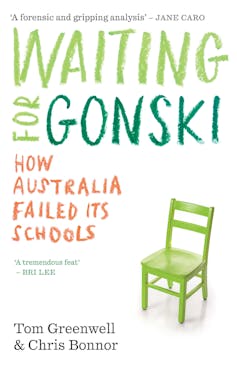Still 'Waiting for Gonski' – a great book about the sorry tale of school funding
- Written by Rachel Wilson, Associate Professor in Education, University of Sydney

You may think “not another article on school funding”. But this important story has to be told and the book, Waiting For Gonski: how Australia failed its schools, should be read by every parent, economist and Australian committed to “the fair go”.





